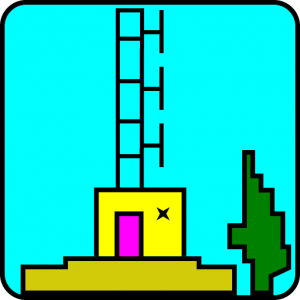Simulations using RADIOMOBILE tool
We use freeware software Radio Mobile for network coverage planning. This software uses ITS Irregular Terrain Model (Longley-Rice) a method for predicting the attenuation of radio signals for a telecommunication link in the frequency range of 20 MHz to 20 GHz.
Setting of a simulation task
Gateway’s parameters:
- Tx-power: 4 dBm as we use 10 dBi antenna and the eirp limit is 14 dBm
- Rx-sensitivity: -120 dBm – even iC880 has -137 dBm sensitivity, we wittingly degrade this value with two intentions:
- to compensate missing house-buildings in our simulation model
- as the practical measurements shown, we hardly any receive signal < -120 dBm
- Antenna gain: 10 dBi
- Other losses: 1 dB losses on RF connectors, Lightning-arrester, coaxial cables anf UFL-to-SMA pigtail (it’s a measured value).
Sensor’s parameters:
- Tx-pwr: 14 dBm as we use 0 dBi antenna
- Rx-sensitivity: -120 dBm – even various RF modems have a different sensitivity around-120 dBm
- Antenna gain: 0 dBi
- Other losses: 0 dB as we expect a short whip antenna directly connected to RF modem.
Simulations using RADIOLAB tool
project name: Coverage Optimization of the LoRaWAN Experimental Network
(FR CESNET project number 660/2020)
This project was solved in the period 06/20 – 06/21 and dealt with the area coverage of the LoRaWAN signal. The analysis of coverage was performed using the software RadioLab, which allows working with 3D display of objects, data and results of computational applications on the basis of 3D terrain relief and general vector map data. The ITU-R P.1812-4 Propagation Model was used in the analysis. This model is used for predicting the attenuation of radio signals for a telecommunication link in the frequency range of 30 MHz to 3000 MHz.
The solution of the project enabled a detailed analysis and accuracy improvement of the area coverage visualization of the LoRaWAN experimental network (for more information click here).
